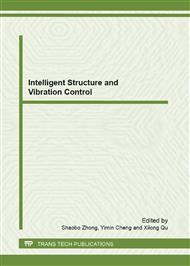p.190
p.195
p.200
p.205
p.209
p.214
p.219
p.224
p.229
A Study on the Acceptance and Use of Handheld E-Book Readers
Abstract:
This paper proposes a new model to test the technology acceptance model which proposed by Davis in order to study the influence factors on acceptance and use of handheld e-book readers. The main conclusions are as follows: 1.There are significant correlation between self-efficacy and usefulness, without significant correlation between self-efficacy and other variables; 2.There are significant correlation between product feature and intention to use, without significant correlation between product feature and other variables; 3.There are significant correlation between usefulness and ease of use as well as intention to use, without significant correlation between usefulness and other variables; 4.There are significant correlation between ease of use and usefulness, without significant correlation between ease of use and other variables; 5. There are no significant correlation among intention to use, self-efficacy, product feature, usefulness and ease of use.
Info:
Periodical:
Pages:
209-213
Citation:
Online since:
February 2011
Authors:
Keywords:
Price:
Сopyright:
© 2011 Trans Tech Publications Ltd. All Rights Reserved
Share:
Citation:


